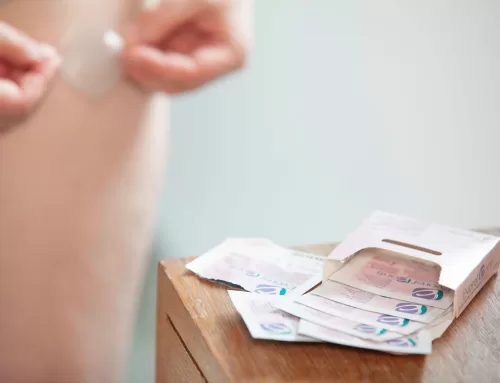18th October was World Menopause Day. A day to raise awareness about menopause and the support options available to women to improve their health and well-being.

This year, the theme of World Menopause Day was “Testosterone for Women at Midlife”. This theme focuses on the recently released Global Consensus Position Statement developed by the leading experts around the world and led by the International Menopause Society.
This statement addresses the benefits and potential risks of testosterone therapy for women and makes recommendations about testosterone prescribing.
But first, let’s explore what testosterone does in women, why women might need testosterone therapy and what this Global Consensus Statement recommends.
Testosterone in men and women
When most people think of testosterone, they think of a male sex hormone. And they aren’t wrong.
In men, testosterone is the main sex hormone that causes many of the stereotypical male physical features, such as increased facial and body hair, lower voice, development of the Adam’s apple and increased muscle mass and strength. It also plays important roles in the development of the reproductive organs, sperm maturation and sex drive.
But women also produce testosterone.
In women, testosterone is made by both the ovaries and adrenal glands, and by converting other hormones into testosterone. And although levels in women are 10-20 times lower than in men, testosterone still plays a very important role in female health.
Testosterone is important for sex drive in females. Plus, testosterone gets converted into estrogen, which is important for bone health and strength.
Testosterone levels in women change over time
In women, testosterone blood levels are at their highest during the ages 10-20 years, then gradually decline over time towards menopause, when they are about one-quarter of peak levels1.
After the age of 65-70 years, testosterone levels in women start to climb, reaching similar levels to those seen at younger ages2.
Lower testosterone levels in women can also be caused by the use of the oral contraceptive pill, oral steroid therapy, medications that block testosterone action (for example, treatments for acne or hirsutism) and some pituitary conditions.
What are the consequences of low testosterone in women?
One of the main challenges to answering this question is the lack of a cut-off or threshold that can be used to define or “diagnose” low testosterone in women.
Nonetheless, studies have found that some women who have lower testosterone also experience low libido, or decreased sex drive. However, this is not found in all studies.
For some women, a decreased sex drive can become a source of distress. They can feel a changing sense of sexuality and sense of self, and an overall decreased satisfaction with their life.
Recurrent or returning low sexual desire associated with distress has been termed ‘Hypoactive Sexual Desire Dysfunction/Disorder’ (HSDD).
There are many reasons why women may experience hypoactive sexual desire disorder. Seeing your doctor (GP) about this can lead to identifying the cause and finding the best treatment strategy for you.

Can testosterone therapy help?
In order to answer this question, the International Menopause Society brought together international experts from nine leading medical organisations.
These experts reviewed and discussed evidence from studies conducted around the world, including a recent systematic review and meta-analysis of clinical trials in testosterone therapy for women3.
They found that testosterone therapy can be effective for postmenopausal women with Hypoactive Sexual Desire Dysfunction for improving sexual wellbeing. The benefits included improved sexual desire, arousal, orgasm and pleasure, together with reduced concerns and distress about sex.
However, they also found there is no evidence that testosterone therapy could improve wellbeing or mood, and advise that it should not be used solely for this purpose.
In conclusion, they found there is not enough evidence to support the use of testosterone for any symptoms or medical condition other than Hypoactive Sexual Desire Dysfunction.
These findings were published in a Global Position Statement4.
While this Statement provides greater understanding about when and how testosterone can be prescribed for women, Dr Sonia Davison, President of the Australasian Menopause Society, explains there are many factors that can lead to low sexual desire and testosterone therapy may not be required.
“Each woman needs a full clinical assessment and other factors affecting Hypoactive Sexual Desire Dysfunction need to be identified and addressed before testosterone therapy is initiated.”
————————————-
The medical content in this article has been reviewed by Professor Susan Davis, President of the International Menopause Society and member of the Endocrine Society of Australia.
References
- Skiba MA, Bell RJ, Islam RM, Handelsman DJ, Desai R, Davis SR. (2019). Androgens during the reproductive years, what’s normal for women? Journal of Clinical Endocrinology & Metabolism.
- Davis SR, Bell RJ, Robinson PJ, Handelsman DJ, Gilbert T, et al. (2019). Testosterone and estrone increase from the age of 70 years; findings from the Sex Hormones in Older Women Study. Journal of Clinical Endocrinology & Metabolism.
- Islam RM, Bell RJ, Green S, Page MJ, Davis, SR. Safety and efficacy of testosterone for women: a systematic review and meta-analysis of randomised controlled trial data. The Lancet Diabetes & Endocrinology. 2019 July 25.
- Davies SR, Baber R, Panay N, Bitzer J et al., Global consensus position statement on the use of testosterone therapy for women. Journal of Clinical Endocrinology and Metabolism 104: 4660–4666. http://academic.oup.com/jcem/article/104/10/4660/5556103







